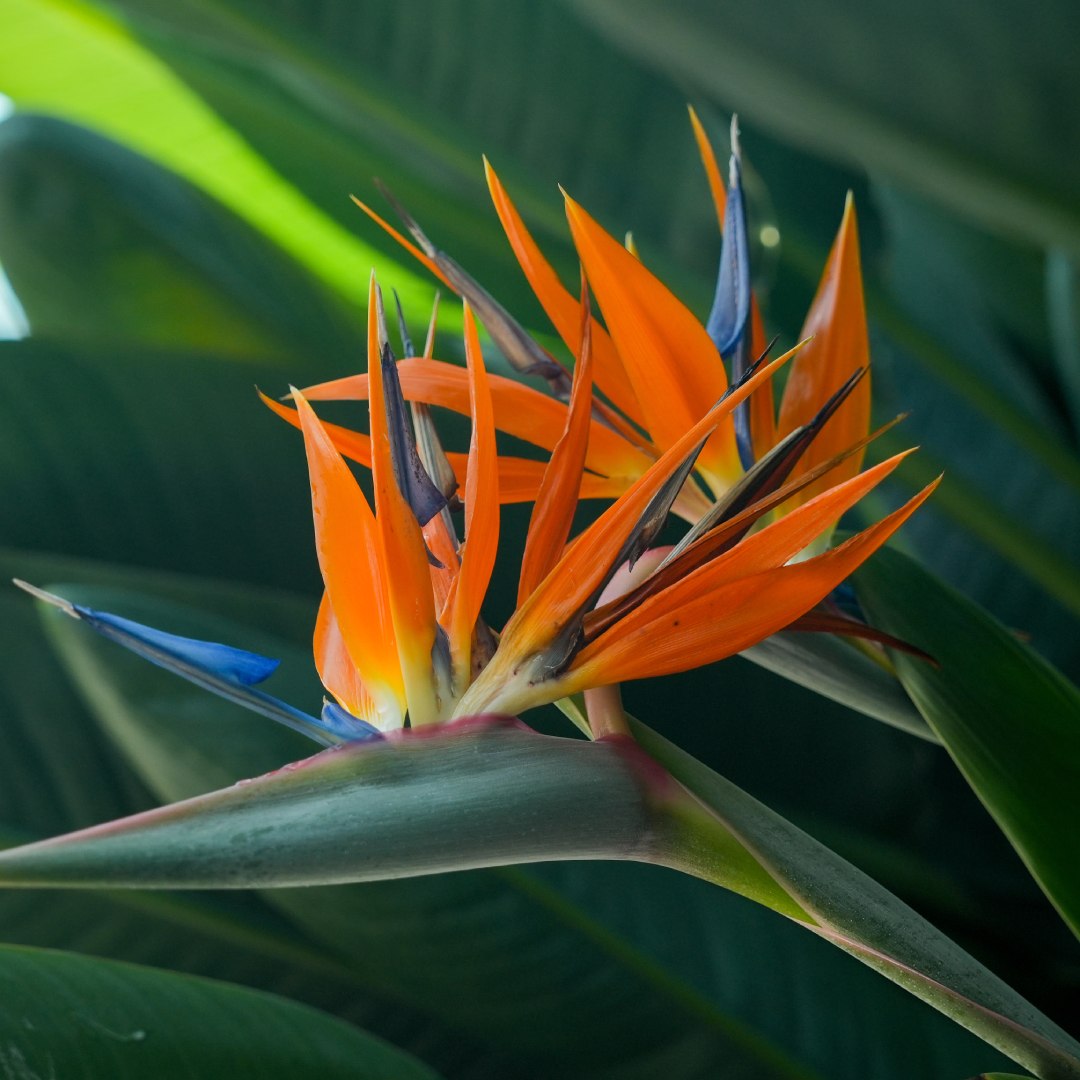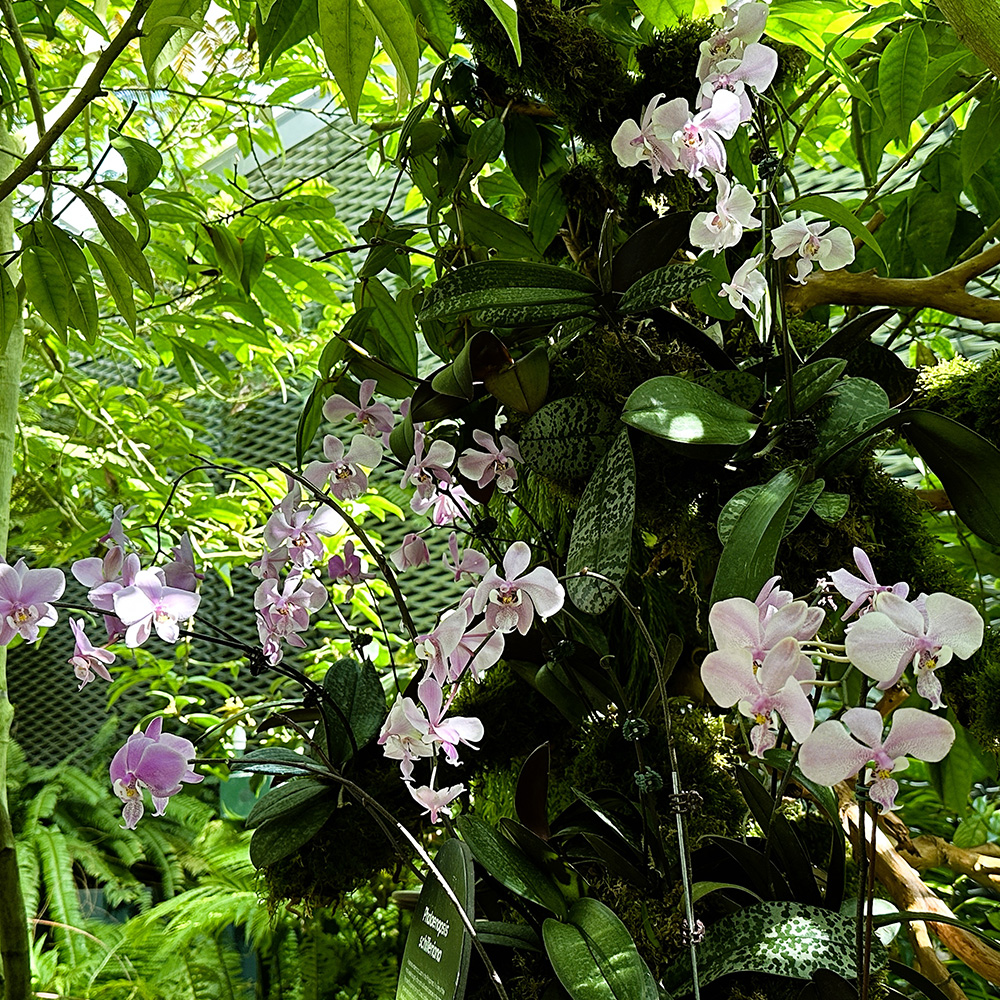Cow’s Horn Spurge
(Euphorbia grandicornis)
All cacti are succulents, but not all succulents are cacti!
Several xerophytes or arid-adapted plants might resemble cacti in appearance, but are unrelated to them genetically. One example is the cow’s horn spurge (Euphorbia grandicornis), a relative of the poinsettia (E. pulcherrima) and garden croton (Codieum variegatum). Native to the dry alluvial plains of southeastern Africa, this arborescent succulent has evolved to resemble cacti as a result of convergent evolution—an evolutionary process where species from different lineages independently evolve similar traits.
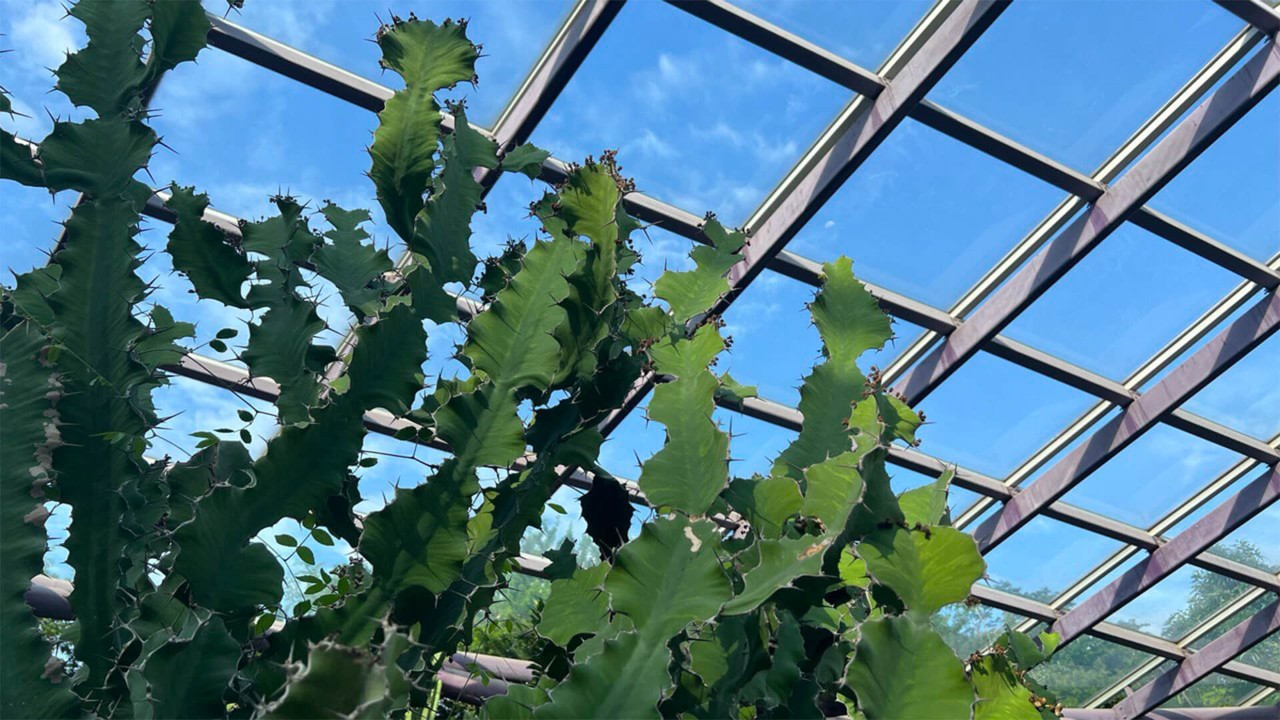 The uncanny resemblance of cow’s horn spurge (above) with a typical cactus.
The uncanny resemblance of cow’s horn spurge (above) with a typical cactus.
Stem succulence is one of the common traits that evolved as an adaptation to hot, dry desert conditions. Cacti form thick, fleshy stems for water storage. However, this might not just be the case for the cow’s horn spurge with its green, winged stems that also carry out photosynthesis. Unlike the spines of cacti species, which have entirely replaced all their leaves, the cow’s horn spurge does have true leaves albeit minute and rather short-lived ones. The twin spines on the cow’s horn spurge are formed from stipules— appendages or outgrowths found on either side of a petiole or leaf-stalk.
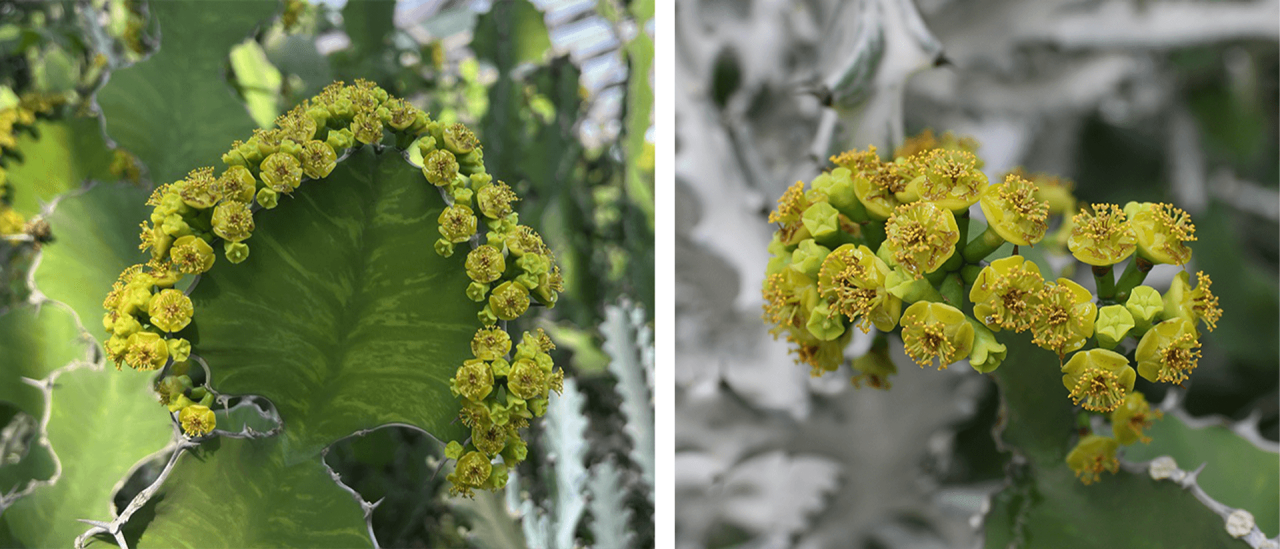 At first glance, the angular stem of the cow’s horn spurge seems to be lined with individual cup-shaped flowers (left) but they are actually flower-heads called cyathia (singular: cyathium)—specialised inflorescences of the genus Euphorbia.
At first glance, the angular stem of the cow’s horn spurge seems to be lined with individual cup-shaped flowers (left) but they are actually flower-heads called cyathia (singular: cyathium)—specialised inflorescences of the genus Euphorbia.
A major difference between cacti and the xerophytic spurges is their reproductive structures. Cacti usually have large, showy flowers—think of the queen of the night cactus or tan-hua!— while the flowers of the cow’s horn spurges are more than meets the eyes.
Each individual flower-head or cyathium is a complex structure composed of multiple florets. Outermost is a ring of five nectary glands that resemble petals. These surround a cluster of reduced male flowers on the base of each nectary gland with a single stamen in each male flower, which in turn surrounds a single reduced female flower with one ovary. Once the female flower in a cyathium is successfully fertilised by its insect pollinators, its ovary will develop into a fruit, in this species, a three-lobed capsule, which will eventually dry up and explode to spread its seeds.
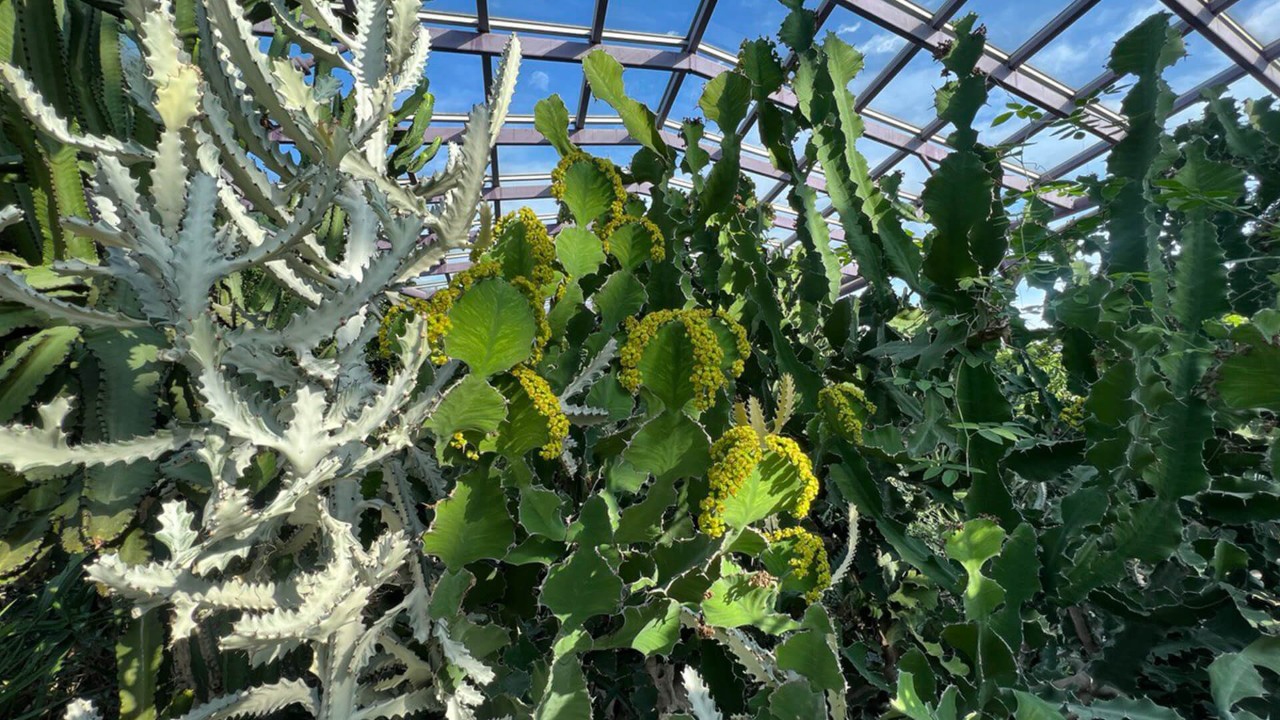 A flowering cow’s horn spurge (middle) in between a variegated mottled spurge (E. lactea ‘White Ghost’, left), and a non-flowering cow’s horn spurge (right).
A flowering cow’s horn spurge (middle) in between a variegated mottled spurge (E. lactea ‘White Ghost’, left), and a non-flowering cow’s horn spurge (right).
Find these blooming succulents in the Sun Pavilion, just beside the Far East Organisation’s Children’s Garden!
Written by: Hazri Boey, Senior Horticulturist (Gardens Operations)
Hazri not only surrounds himself with plants at work; he has an abundant collection at home too! Having nurtured a keen interest in nature since young, he might have gone on to become a zookeeper caring for owls or sloths had it not been for his plant identification talent!
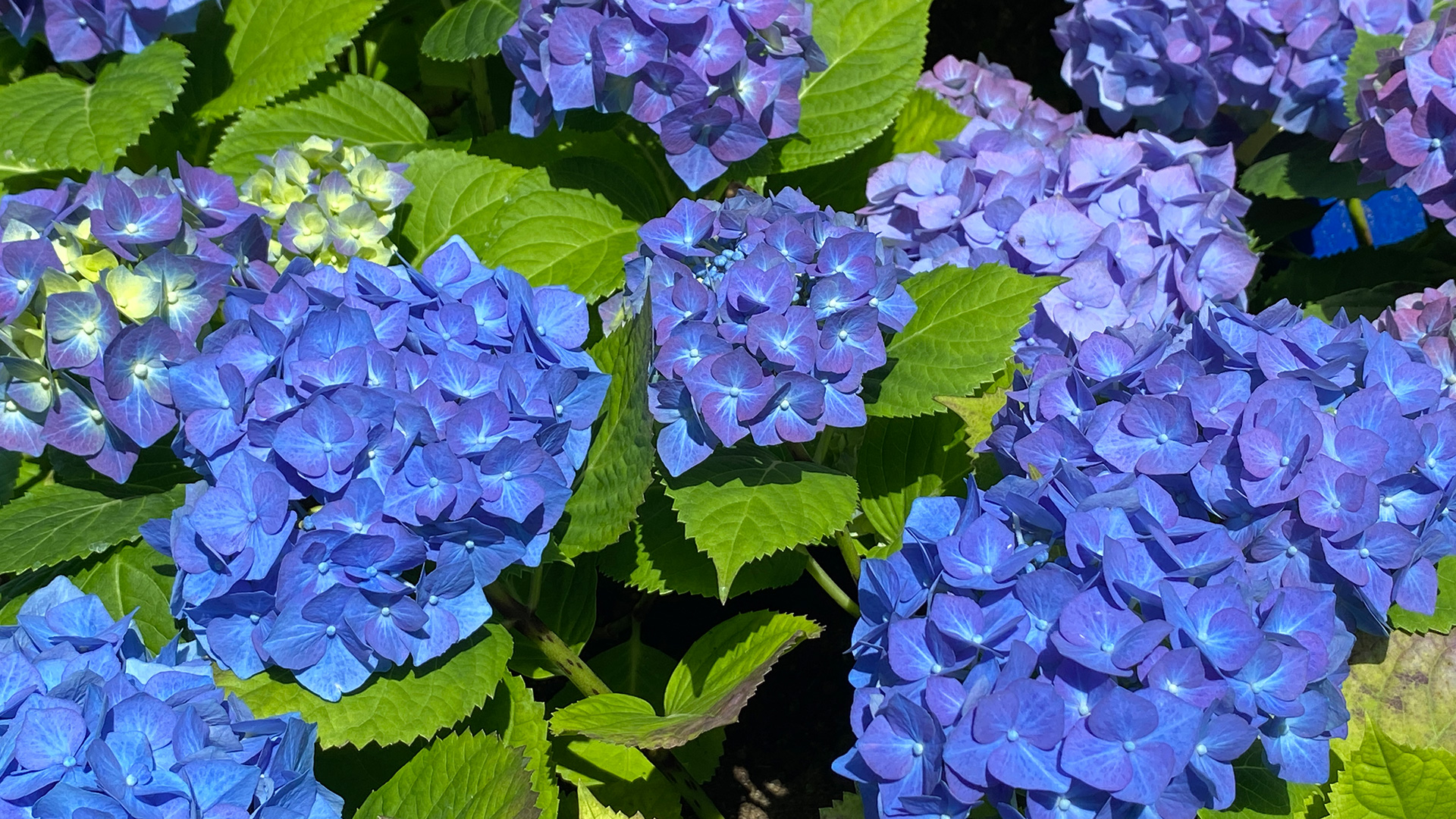
/1000x1000-thumb-whatsblooming_crescentia_cujete_Image01.jpg)
